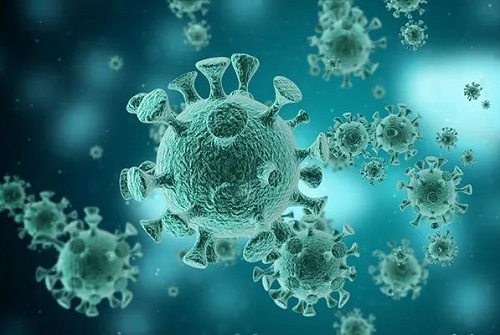创新背景
人工智能的飞速发展已经在诸多领域显示出明显的优越性,蛋白质折叠、温度监测和碳清除、病毒追踪等都迫切需要新兴技术介入,高效准确地给出结果,促进技术发展和人类健康安全保护。
创新过程
2022年4月《自然》杂志发表了对于气候变化和病毒传播之间的流行病学论文。论文中指出,将病毒监测和气候变化带来的物种分布结合研究非常有必要,预测在气候变化影响下,2070年至少会发生1.5万次新的跨物种病毒传播。

气候变暖带来物种迁移,寄生在它们身上的寄生虫和病原体也随之移动,促进了病毒交换。对此,人类需要的是能源节约减少排放,遏制住气候变化,同时开发检测病毒的新技术。蓬勃发展的人工智能技术或许可以满足无接触的实时监控和信息汇报。

病毒由蛋白质和核酸组成,颗粒很小、以纳米为测量单位、结构简单、寄生性严格,以复制进行繁殖的一类非细胞型微生物。它没有细胞结构、只能在细胞中增殖。生物科学可以将以往的病毒发现合成数据输入人工智能,利用人工智能的数据储存和自我生成功能,预测新型病毒的种类,达到对病毒和细胞的准确区别,能够快速在公共场合检测异常病毒存在,并对其做出初步预测,然后示警专门研究人员,进行病毒传播提醒。

对能源使用和排放状况人工智能也需要合成数据,帮助促进绿色能源使用和碳清除。利用在生产生活方面的监测管理作用,实时监测排放状况,尽量减少排放。此外,人工智能需要在气候研究方面以最新最全的算法达到对气候状况的准确监控。借助物联网和大数据,构建气候和物种分布系统,定时反馈气候状况,对极细微的气候变化也要做到微量监测。在物种出现在信地区时及时报警,提醒人们对物种迁移保持警惕心,检查它们携带的寄生物,最缓解病毒传播贡献作用。
创新关键点
利用人工智能监测气候变化和病毒,尽可能保护环境、减少排放,帮助合理控制病毒传播。
创新价值
深入开发人工智能在气候和病毒监测方面的功能,对于人类健康发展和环境保护将有重大作用。
Artificial intelligence detects the possibility of climate and viruses
In April 2022, the journal Nature published an epidemiological paper on the relationship between climate change and virus transmission. The paper pointed out that it is very necessary to combine virus monitoring and species distribution brought about by climate change. It is predicted that under the influence of climate change, at least 15,000 new cross-species virus transmissions will occur in 2070.
As the climate warms, species migrate, along with the parasites and pathogens that live on them, facilitating virus exchange. In this regard, human beings need to save energy, reduce emissions, curb climate change, and develop new technologies to detect viruses. The booming artificial intelligence technology may be able to meet contactless real-time monitoring and information reporting.
Viruses are composed of proteins and nucleic acids, with small particles, nanometers as measurement units, simple structures, and strict parasitics. It has no cellular structure and can only proliferate in cells. Biological science can input synthetic data of past virus discovery into artificial intelligence, and use the data storage and self-generation functions of artificial intelligence to predict the types of new viruses, achieve accurate distinction between viruses and cells, and quickly detect abnormal viruses in public places. And make preliminary predictions about it, and then alert specialized researchers to remind the virus spread.
Artificial intelligence on energy usage and emissions also needs to synthesize data to help facilitate green energy use and carbon removal. Utilize the monitoring and management role in production and life to monitor the emission status in real time and minimize the emission. In addition, artificial intelligence needs to achieve accurate monitoring of climate conditions with the latest and most comprehensive algorithms in climate research. With the help of the Internet of Things and big data, we can build a climate and species distribution system, feed back climate conditions regularly, and perform micro-monitoring of extremely subtle climate changes. Timely alarm when species appear in the new area, remind people to be vigilant about species migration, check the parasites they carry, and contribute to the best mitigation of virus transmission.
Artificial intelligence is a good way to understand the virus without contact. The in-depth development of its functions in climate and virus monitoring will play a major role in the healthy development of human beings and environmental protection.
智能推荐
行星科学创新思维 | 创新使用地震波探测火星内部结构
2022-09-20创新性地使用地震波探测火星解剖结构,有助于进一步探索火星乃至行星内部,将进一步推动科学家了解火星的内部动力学如何导致活动磁场和所有地表水的丧失,并猜测这些过程是否以及如何在各个星球上发生。
涉及学科涉及领域研究方向地质模型创新思维 | 创新结合地球动力学创建近一亿年的高分辨率地球模型
2023-08-18涉及学科涉及领域研究方向海洋环境创新思维 | 保护珊瑚礁网络或可维护水生环境多样性
2022-08-15模拟珊瑚幼虫在珊瑚礁之间的扩散联系,强调珊瑚礁连通性的重要性。
涉及学科涉及领域研究方向地理学创新思维 | 太阳风暴或影响南北两极出现极端高温
2022-06-29从太阳风暴的角度考虑两极高温出现的原因。
涉及学科涉及领域研究方向